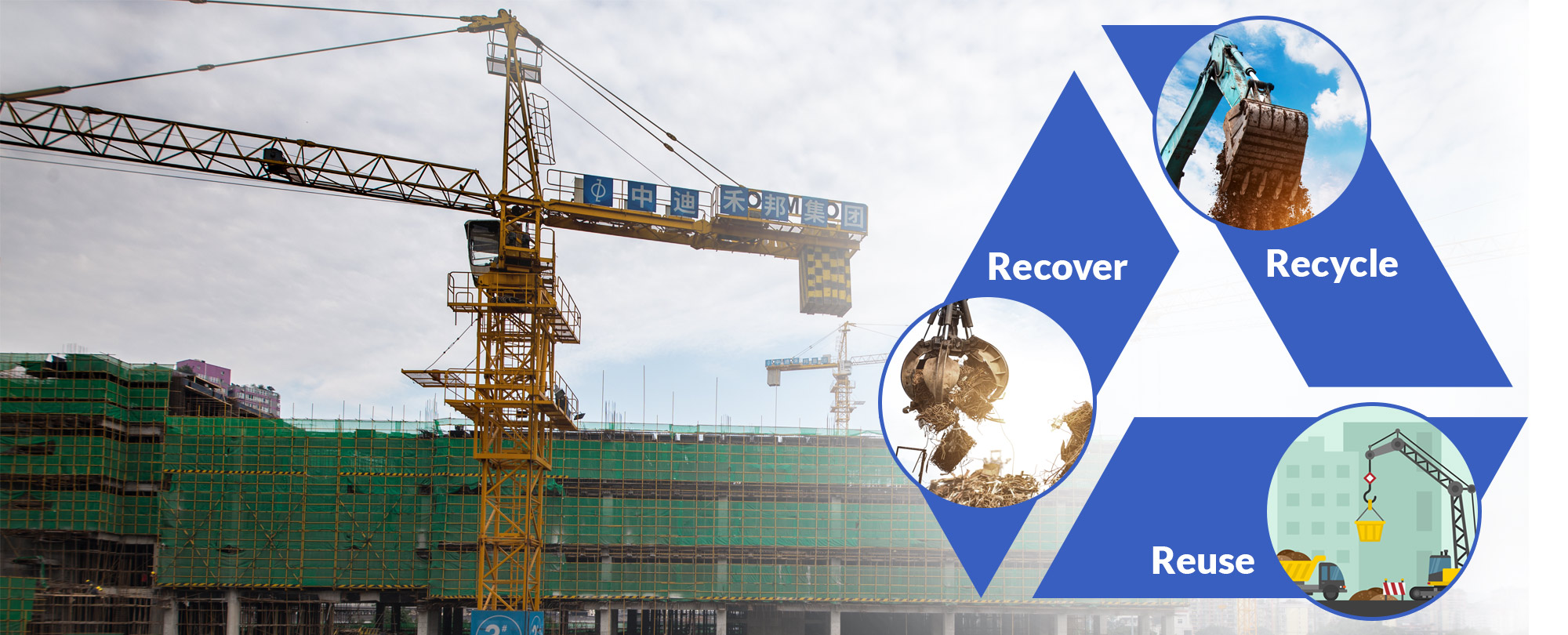Demolition of buildings or renovation and also during new construction there is creation of construction waste. such construction range from buildings, roads, bridges, dams, and constructions under government projects. The main reasons behind the rapid construction growth is industrialization, evolving IT sector, and development of new infrastructural projects. This results in rising need for construction materials. And with rising construction activity, there is increase in construction waste creation. Proper Construction waste management helps to solve the increasing problem of construction waste.
Wastes that are generated from construction and demolition works are concrete, blacktop, wood, gypsum from drywall, glass, plastics, metals, blocks, etc.
The statistics from various data sources state that there are millions of tons of construction waste created annually. That contributes to substantial financial loss to the contractors, developers, and regional authorities. Such losses turn out to be financial setbacks for the country. What happens is demolition creates more waste than construction.
It not only brings financial loss but also causes air pollution due to the improper construction waste management practices. The construction sector is a primary culprit behind pollution. It is liable for about 4% particulate pollution. And a major cause of water pollution than any other industry, and several issues of noise pollution.
There is a philosophy that considers construction wastes as resources. This philosophy works on the concept of ‘Recover, Recycle, and Reuse.’ This technique will help in creating some or the other construction infrastructures from construction waste. Thus helping in best construction waste management.
Construction waste management- The 3R concept has outstanding benefits at the economic level:
- Reusing of material causes very low or say negligible amount to the contractor.
- Converting waste materials to useful materials is recycling. It requires less energy than turning raw materials to create new ones.
- The concept of waste reduction and reuse will attract Potential customers who are interested in green and efficient building techniques.
- Giving these waste materials to not-for-profit institutions who have practical experience in restoration of materials provide tax reduction benefits.
- 3R’s of construction waste management will help in deduction of emission of greenhouse gases that contributes to environmental change.
The rising concern towards environmental changes has increased the demands for the green building. The US government has set up proper guidelines for sound management of construction and demolition debris. As per the EPA report, each year around 530 million tons of Construction and Demolition debris is created in the country. This alarming size of Construction and Demolition debris makes it essential to follow the process of recycling of construction waste properly on job sites.
If you are thinking of construction of energy efficient buildings by complying with the set criteria or regulations. Then, go through these tricks that support in reducing construction waste on job sites.
Prepare the right plan:
Setting the exact plan helps in gaining success both personally and professionally. A right goal is the one that is precise, accurate, and achievable. Setting a goal helps in working on the task. In the same way goal setting helps in reduction of construction waste. You can keep it amount wise; so you will set goals to reduce waste by a given amount daily, monthly or annually. If you are working on a LEED-certified construction project, you will have to use recyclable and recycled waste materials in construction.
Communicate Your Plan to Team:
Communicate your plan of action with your team. Decide each one’s roles and activities. Keep check on your team for recycling as well as keep the team and subcontractors responsible for the recovery of materials. This is a good idea to keep everyone on board and work enthusiastically on construction waste management.
Keep your standard operating procedures to include;
- Updates on Waste reduction during team meetings
- Status reports covering the statistics of waste as well as recycling both
- Vendor contracts should have specific requirements for waste prevention and disposal
This technique will keep you away from the worries of construction waste management. And you can handle the issue of C&D debris best by use of ‘Recover, Recycle, and Reuse’ concept to its core.
